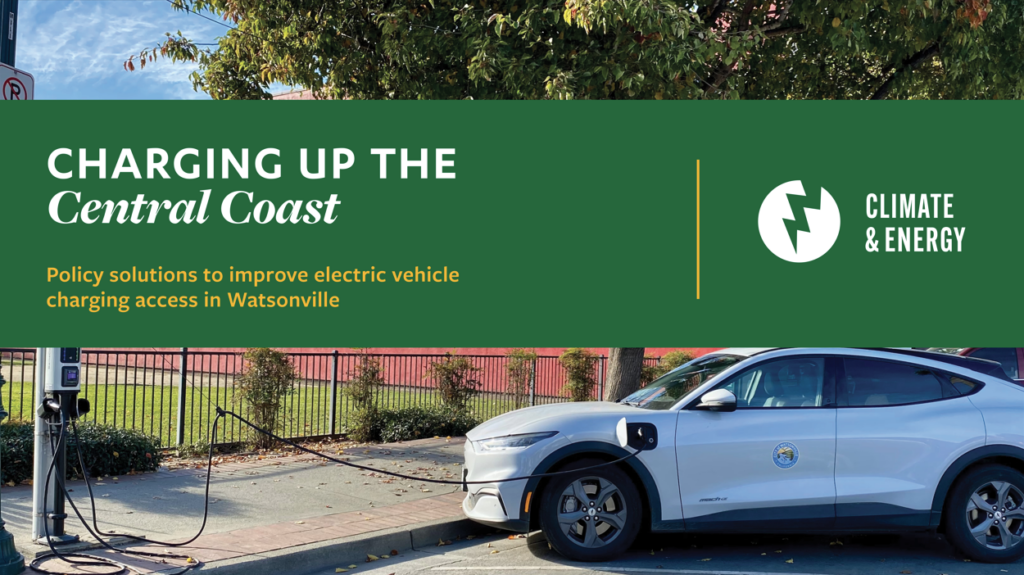How Can Cities Ensure EV Charging Accessibility for Lower-Income Drivers?
Watsonville, California as a Case Study for Policymakers
California’s ambitious goal to end the sale of internal combustion engine passenger vehicles by 2035 will require addressing the challenges faced by lower- and moderate-income drivers in accessing battery-powered electric vehicles (EVs). Chief among these concerns is their need to have a convenient and affordable place to charge the vehicles.
Currently these residents too often experience limited access to EV charging stations, especially in lower-income communities characterized by lower home ownership rates and higher rates of tenancy in apartment buildings. Residents in these areas are more likely to lack dedicated parking spaces equipped with electric outlets, hindering their ability to charge EVs conveniently. Even those with garages or parking spaces may face financial constraints when it comes to investing in private charging and electrical upgrades. Compounding these challenges is the often-inadequate grid infrastructure in lower-income areas.
In response to these obstacles, UC Berkeley School of Law’s Center for Law, Energy & the Environment (CLEE) partnered with the City of Watsonville, a diverse city of 50,000 in Santa Cruz County’s agricultural heartland. Due to its location, demographics, and ambitious policy goals, Watsonville represents a potential model and case study for other cities around the state grappling with how to boost zero-emission vehicle charging infrastructure.
Today CLEE is pleased to release a new report, which draws on stakeholder interviews and a convening held in Watsonville to offer a set of policy recommendations for both state and local leaders. These recommendations aim to accelerate investment in EV charging infrastructure not only in Watsonville but other cities facing similar challenges in meeting state targets while addressing lower-income residents’ needs.
Key solutions include:
- Comprehensive Mapping Assessment: Watsonville’s City Planning Department and Public Works & Utilities Department could initiate a comprehensive mapping assessment to determine optimal and equitable charger locations based on local needs and transportation patterns.
- Zoning and Permitting Policies: Watsonville’s City Planning Department could revise zoning and permitting policies to require EV charger installation or EV-ready electrical infrastructure at certain priority locations.
- Electricity Rate Optimization: The CPUC and utility companies could implement electricity rates that reduce the cost of charging during off-peak hours and improve transparency for consumers about these rates.
- Community Awareness Campaigns: The state transportation agencies could expand support for community based organizations in Watsonville that conduct targeted, multi-lingual public awareness campaigns about the potential cost savings and benefits from switching to EVs.
By prioritizing charging access, state and local leaders can ensure that California’s path toward equitable EV deployment is not only aspirational but also achievable, particularly for the lowest-income drivers in the state. The lessons learned from Watsonville can serve as an example for other cities grappling with similar challenges, ultimately contributing to a more inclusive and sustainable transportation landscape.
Read our full report here- Charging up the Central Coast: Policy solutions to improve electric vehicle charging access in Watsonville
Reader Comments
One Reply to “How Can Cities Ensure EV Charging Accessibility for Lower-Income Drivers?”
Comments are closed.








the way to support EVs is for states if not Congress to mandate the fossil fuel boys to install charging stations at every gas station.